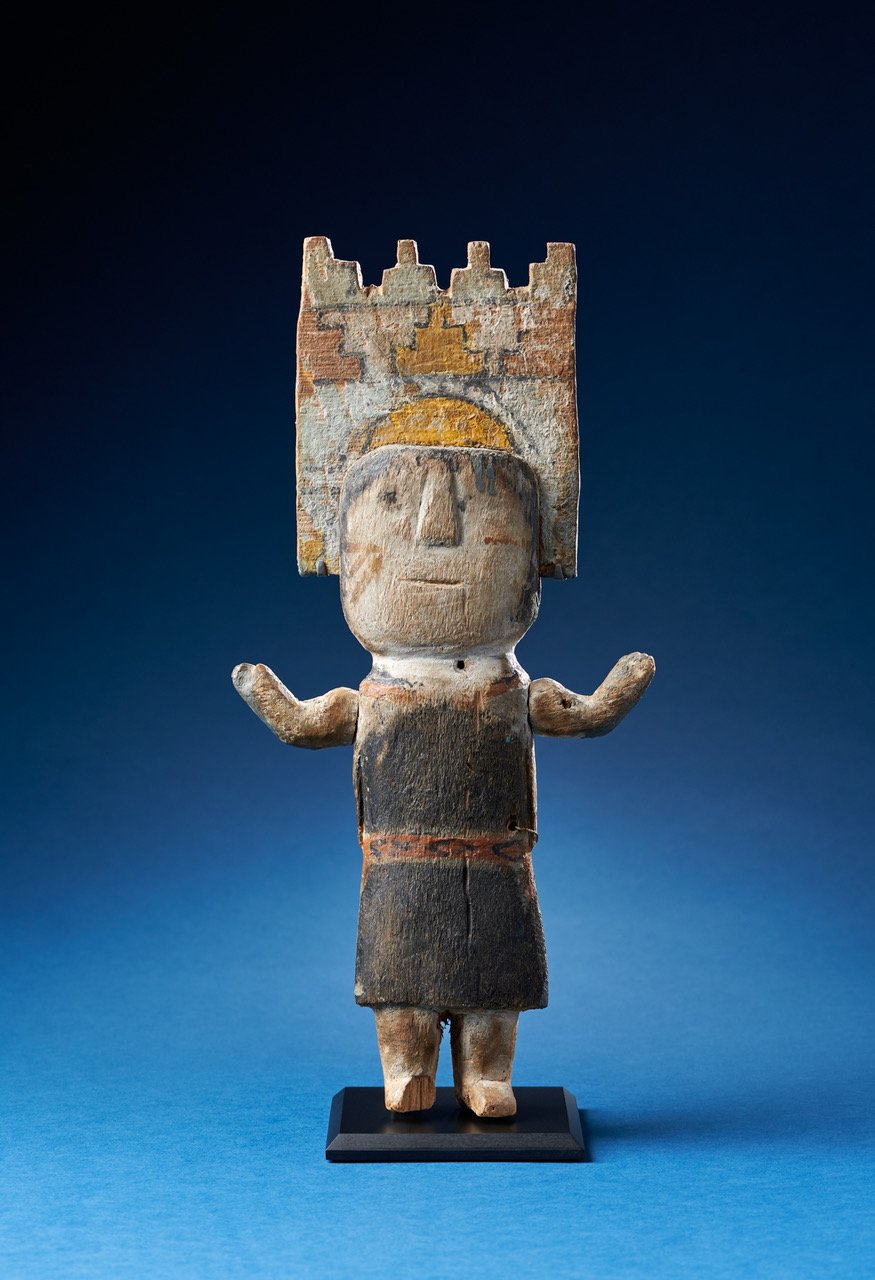Dig It - 9/8/22
Once Again Fellow Seekers we are embarked on another exciting adventure into the mysterious and confusing world of antique Native American Art.
Today we will be looking at Kachinas or Katsinas. I guess I should start with the fact that technically this is not a katsina, because it does not represent a supernatural ancestral spirit. It is a late 19th century Pueblo carving of a lady dancer wearing a tablita, a Spanish word meaning, “little board or plank”, referring to the wooden board headdress the dancer is wearing. The tablita is carved and painted with stepped pyramids representing cumulus clouds that bring rain and the mountains where the rain usually falls. These types of tablitas are usually worn at summer dances when the dancers are asking for rain.
At Hopi, these are the “Butterfly Dances" and in the Rio Grande Pueblos they are “Corn Dances”. This late-19th century Pueblo carving represents a female dancer wearing a tablita and one shoulder dress and sash. Her hands are raised in an orans pose, (Orans posture, look it up, it is from my old Art History days. I knew it would come in handy at some point.) where she would hold evergreen boughs or feathers. The dancer does have a wonderful expression, part quizzical, part concentration, created by a simple slanting slash representing her mouth. Should you acquire her, she will bring good luck and you will be forever fascinated by her Mona Lisa smile. Adios Fellow Seekers!
